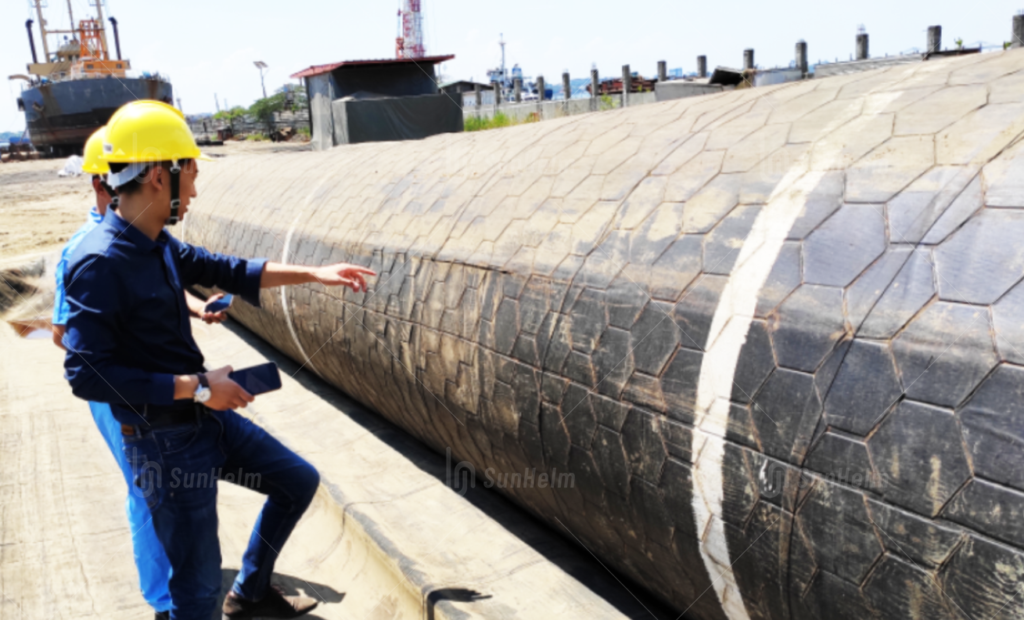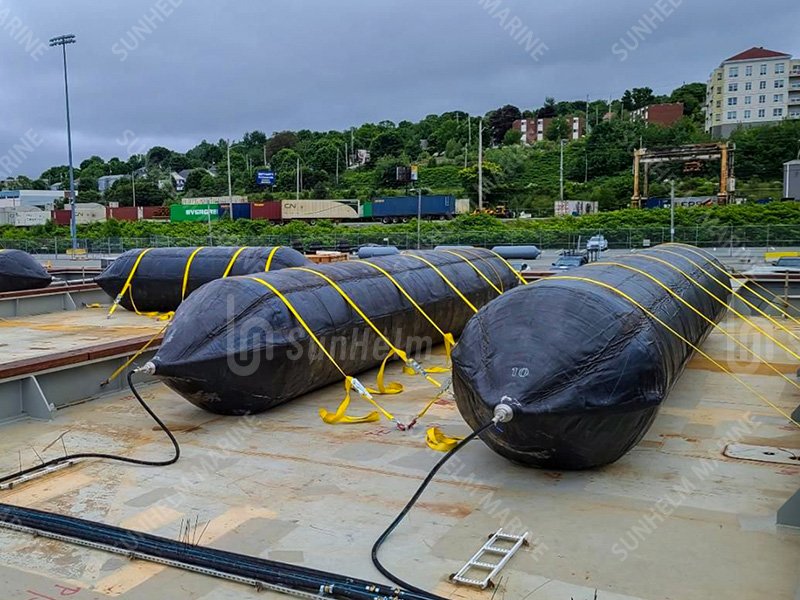1. Introduction
Ship launching airbags play a key role in safely launching and moving ships. They support the weight of the vessel and reduce friction during launching. If an airbag ruptures, it can cause accidents and financial losses. Knowing the common causes of rupture helps operators prevent problems and extend the airbag’s life.
2. Overview of Ship Launching Airbags
Ship launching airbags are made of multiple layers of strong rubber and fabric. Their cylindrical shape and flexibility allow them to distribute weight evenly and absorb pressure. They are used in shipyards and ports to launch ships, move heavy equipment, or transfer vessels. Their design ensures smooth and safe movement from the slipway to the water.

3. Common Causes of Airbag Rupture
3.1 Material Defects
Some marine airbags have defects from manufacturing. These defects include air bubbles, weak layers, or poor bonding. Low-quality rubber or fabric can crack or tear under normal use. Always check the manufacturer’s quality certificates before buying airbags.
3.2 Overloading
Overloading is a common cause of rupture. Each airbag has a maximum load capacity. When a ship is heavier than the design limit, or weight is uneven, the ship launching airbags may burst. Operators must calculate the ship’s weight and use enough airbags to avoid overload.
3.3 Improper Handling
Airbags can rupture if handled carelessly. Rolling, installing, or moving them over sharp objects, nails, or stones can scratch or puncture the surface. Even small scratches can turn into large ruptures under heavy pressure. Careful handling prevents damage.
3.4 Environmental Factors
High temperatures, sunlight, and chemicals can weaken rubber and fabric layers. Storing airbags in direct sunlight or near acids or oils accelerates aging. Old or degraded airbags are more likely to rupture even under normal load. Store airbags in a shaded, dry area to prevent damage.
3.5 Maintenance Neglect
Regular maintenance is essential. Operators should check ship launching airbags for cracks, wear, or leaks before each use. Cleaning debris from the surface and slipway reduces puncture risk. Ignoring maintenance increases the chance of rupture.
4. How to Prevent Airbag Rupture
- Inspect marine airbags before each use.
- Use enough airbags for the ship’s weight.
- Handle airbags carefully to avoid scratches or punctures.
- Store them in a dry, shaded area.
- Clean the slipway and airbag surface to remove sharp objects.
5. FAQ
Q1: How often should ship launching airbags be inspected?
A1: Inspect them before every use for cracks, wear, or leaks.
Q2: Can a punctured airbag be repaired?
A2: Minor punctures can be repaired with proper vulcanization, but large ruptures usually require replacement.
Q3: How many airbags do I need for a ship?
A3: Calculate the ship’s weight and use enough airbags to keep the load below each airbag’s capacity.
Q4: How should I store ship launching airbags?
A4: Store them in a dry, shaded area, away from sunlight, chemicals, or sharp objects.
Q5: What causes airbags to wear out faster?
A5: Overloading, improper handling, sunlight, chemicals, and poor maintenance speed up wear.


